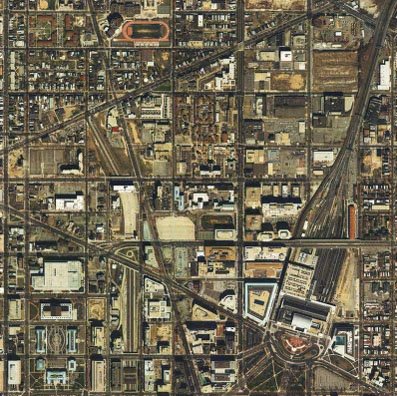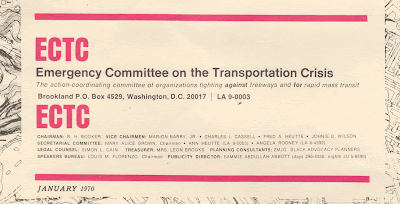The existing 11th Street Bridges project bundles too many bad ideas to past muster,
particularly its creation of a new elevated berm highway for the sake of crossing over a RR that will be removed a few years later.Instead, adopt short and long term plans:
Short term: simply add the desired missing ramps from the 11th Street Bridge to and from DC 295 to the east. To fit these with the existing pair of two lane from I-295 to and from the west-south and the pair of two lane local connectors, with the existing pair of four lane spans, reduce the local connections from two to one lane apiece, and make the new I-295 ramps each with one continuous lane with two lane approaches along the Anacostia Freeway. To provide these with two lanes each would require re-routing at least the northbound local connection to the new northbound express ramp, or widen at least the northbound 11th Street span from 4 to 5 lanes.
Concurrently or consecutively, reconstruct the Anacostia Freeway underground as has been suggested by the DCDOT project for the Pennsylvania Avenue interchange, extended as far towards the 11th Street Bridges as geometrically possible. Because of the extra vehicular traffic, Anacostia Freeway underground reconstruction should accomodate a minimum of 4 lanes per direction, plus shoulders and a merge lane.
Long term: following the
RR removal-relocation (which will depress and bury a segment of the the existing RR along the Anacostia Freeway), replace the 11th Street Bridges with lower level spans that go underground south of M Street to an undergrounded SE Freeway, maintaining the full connections at both ends of these spans, with the existing eastern SE Freeway segment covered with a waterfront promenade, and so extended towards RFK Stadium/Whitney Young Memorial Bridge, and which undergrounds a portion of its connecting Anacostia Freeway segment.
This spreads and mitigate the burden while spreading the benefit- including reconnecting the area of SE boundaries north and south via I and M Streets, and east-west via 7th and 12th Streets,
opening up blocks of reclaimed land for new development.
The official planning squanders these virtues.
 Washington, D.C. I-395 options
Washington, D.C. I-395 options Currently truncated I-395 Center Leg at New York Avenue
Currently truncated I-395 Center Leg at New York Avenue
































